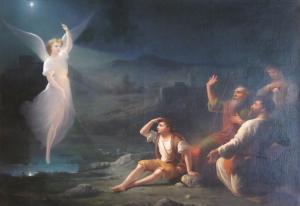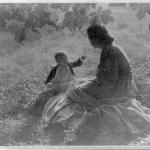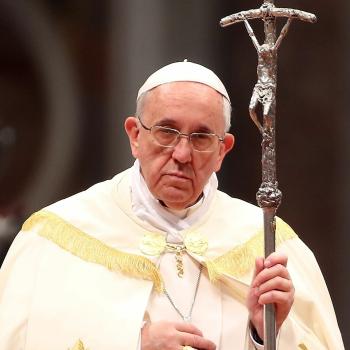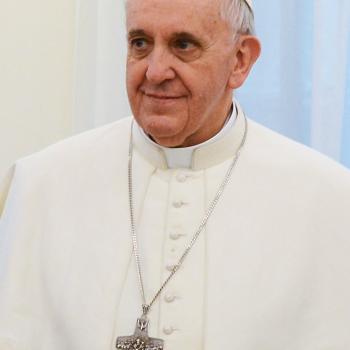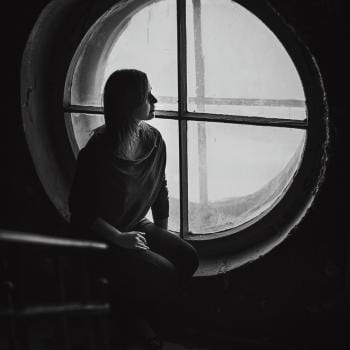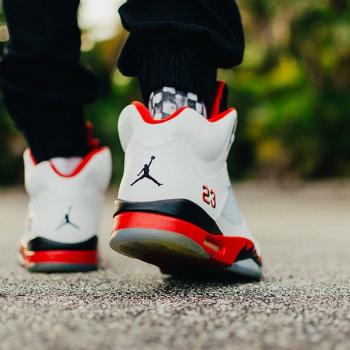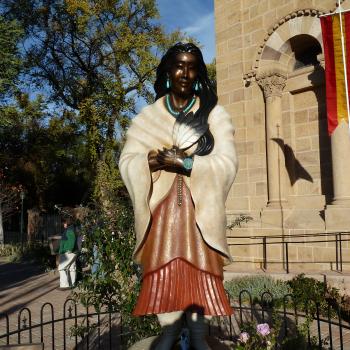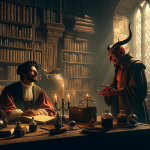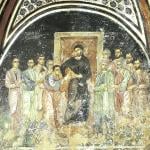Traditions ground us and connect us to our past, while giving us a link to the future.
Growing up, my family always listened to Bing Crosby’s Christmas album while trimming the tree. It just wasn’t a tree decorating day without it! I learned my first bit of Latin from him (“Adeste Fideles”) and also a bit of Hawaiian (“Mele Kalikimaka”). I sang along with him and the Andrews Sisters while hanging my favorite ornaments on the artificial tree’s green branches and ringing little bells so angels could earn their wings. After we finished the tree (and the little Christmas village and Creche), we’d enjoy hot cocoa and watch White Christmas (my mom’s favorite Christmas movie, which also happened to star good, old Bing). My sister and I, every year, would put on our own rendition of the “Sisters” number from the movie once it had ended.
These things happened every year and now, though slightly modified to integrate my husband’s family’s traditions, we enjoy these things with our children, as well. It’s fun to connect with our children in this way and also with our larger family. We know that when we our any of my in-laws are trimming our trees, we’re watching White Christmas. Every time I hear Bing Crosby croon “White Christmas”, I think of my mom. Maybe someday I’ll get a video message (or whatever communication technology is in vogue at the time) from my children and their families letting me know that they’re watching the same movie while trimming their trees. These traditions link us all together across time.
Creating traditions for our family has been a uniting factor in our marriage.
Of my heritage, I am part Italian and some Christmas traditions that I’ve always enjoyed from this background have been the Feast of the Seven Fishes on Christmas Eve and reading Tomie dePaola’s book Strega Nona. My husband, though, is not Italian but is part Greek. He grew up eating dolmas and aveglomeno soup and other Greek foods at every holiday. Both traditions were important to us so we figured out a way to honor both heritages. On Christmas, we do the Italian traditions and on Easter we do the Greek traditions.
Through strong familial and cultural traditions, we have created new traditions for our specific family. Our children know of their heritage and we learn more about each other and our backgrounds each holiday. It is such a special thing to share my Great-Grandma Capretti’s pizzelle recipe with my husband and children. Likewise, it is so special to use my husband’s family’s recipes for dolmas and aveglomeno soup and all the rest. In fact, these things have been such a uniting factor for us that while we say we are Greek and Italian, we’ve more often begun to call ourselves simply Mediterranean.
Additionally, we’ve started some new traditions with our family. For St. Nicholas’s feast day, we each get a new set of PJs (sometimes they match, sometimes they’re themed) to wear on Christmas Eve and also sometimes get new slippers and treats to eat on Christmas Eve. Every Saturday and Sunday, we have bacon with our breakfast no matter what else we’re eating. At bedtime, as the children lay down, I bless them with my own formulation: “God bless and keep you. Sleep well and have sweet dreams. May your guardian angel be close at hand and Mama Mary wrap you in her mantle. I love you.” My daughter has started blessing me in this way, too. We define who we are as a family and who we strive to be through the traditions we hold.
Traditions give rhythm to life within a specific family.
Much like the Liturgical calendar, holidays and traditions allow a rhythm to life. We know what to expect and when and prepare accordingly. This can be such a great comfort in a world and life that is often so unpredictable. I know every Christmas we are going to have an enormous fish meal even though the specific dishes may change each year (we like to try new things). I also know that I’ll have to buy a bunch of eggs and orange juice and anise oil and set aside an entire evening to slave over my pizzelle iron and make these delicious cookies. Likewise, each Holy Week, I know I need to buy lamb and ground beef and orzo and all the other ingredients necessary for our Easter meal.
This steady, rhythmic living is a reminder that God is constant and unchanging and unfailing. We may face challenges, difficulties, and roadblocks in life, but these holy days and traditions are constant, He is constant. Within my family, we know that no matter what house we’re in or what town or state or what challenges we’re going through, we will eat pizzelles and fish on Christmas and listen to Bing Crosby, and that we will be together. Traditions stabilize us in the midst of whatever whirlwind we find ourselves.
The greatest traditions point us toward Christ and the eternal.
Why do we eat seven kinds of fish on Christmas Day? Fish is a symbol for Christ and seven is the number of perfection– it signifies that Christ is the fullness; He invites us to take part in His life. A fitting way to celebrate the beginning of that ability, His birth! On Easter, we eat lamb because lamb is another symbol for Christ and He is called the Lamb Who Was Slain. As a family, we commemorate His sacrifice and victory by eating lamb.
lIn both of these scenarios, we do as our ancestors did and pass this on so that future generations of our family may do the same. This chain signifies eternity, the never-ending worship of the Lord Jesus Christ, together with the angels and saints, in heaven. In our family traditions, past, present, and future stand still in time together, converging in one moment. The greatest tradition we have as Catholics is the mass and the celebration of the Eucharist. In this tradition, not only does all time converge into one moment, but God actually comes down to us and eternity touches time. Eternity is so much less a timeframe than it is a state of being. Everything we do should point us toward this reality.
Image courtesy of https://commons.wikimedia.org/wiki/File:%27The_Angel_Appearing_before_the_Shepherds%27_by_Thomas_Buchanan_Read,_Dayton_Art_Institute.JPG

